Efficacy Evaluation and Tracking of Bone Marrow Stromal Stem Cells in a Rat Model of Renal Ischemia-Reperfusion Injury
- PMID: 31016203
- PMCID: PMC6446097
- DOI: 10.1155/2019/9105768
Efficacy Evaluation and Tracking of Bone Marrow Stromal Stem Cells in a Rat Model of Renal Ischemia-Reperfusion Injury
Abstract
Objectives: The aim of this study was to evaluate the effects of bone marrow stromal stem cells (BMSCs) on renal ischemia-reperfusion injury (RIRI) and dynamically monitor engrafted BMSCs in vivo for the early prediction of their therapeutic effects in a rat model.
Methods: A rat model of RIRI was prepared by clamping the left renal artery for 45 min. One week after renal artery clamping, 2 × 106 superparamagnetic iron oxide- (SPIO-) labeled BMSCs were injected into the renal artery. Next, MR imaging of the kidneys was performed on days 1, 7, 14, and 21 after cell transplantation. On day 21, after transplantation, serum creatinine (Scr) and urea nitrogen (BUN) levels were assessed, and HE staining and TUNEL assay were also performed.
Results: The body weight growth rates in the SPIO-BMSC group were significantly higher than those in the PBS group (P < 0.05), and the Scr and BUN levels were also significantly lower than those in the PBS group (P < 0.05). HE staining showed that the degree of degeneration and vacuole-like changes in the renal tubular epithelial cells in the SPIO-BMSC group was significantly better than that observed in the PBS group. The TUNEL assay showed that the number of apoptotic renal tubular epithelial cells in the SPIO-BMSC group was significantly lower than that in the PBS group. The T2 value of the renal lesion was the highest on day 1 after cell transplantation, and it gradually decreased with time in both the PBS and SPIO-BMSC groups but was always the lowest in the SPIO-BMSC group.
Conclusion: SPIO-labeled BMSC transplantation can significantly promote the recovery of RIRI and noninvasive dynamic monitoring of engrafted cells and can also be performed simultaneously with MRI in vivo for the early prediction of therapeutic effects.
Figures
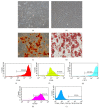
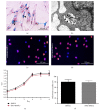
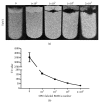


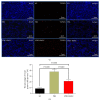
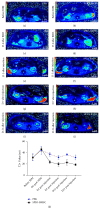
References
-
- Council N. (85-23(rev.)).Guide for the Care and Use of Laboratory Animals. (8th) 2011;327 doi: 10.17226/12910. - DOI
MeSH terms
Substances
LinkOut - more resources
Full Text Sources
